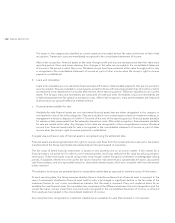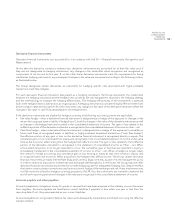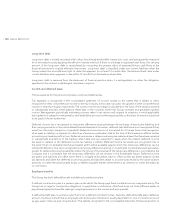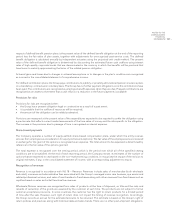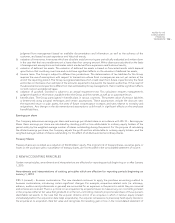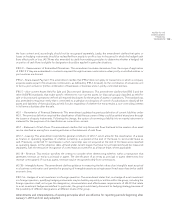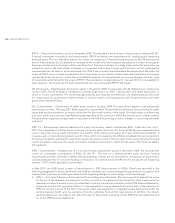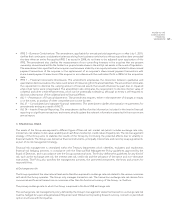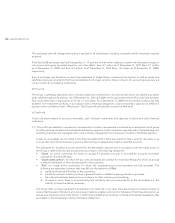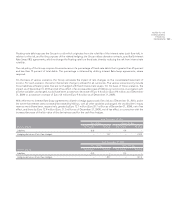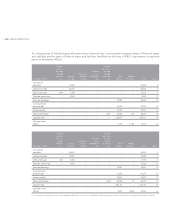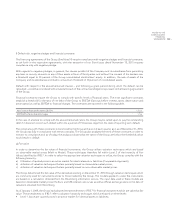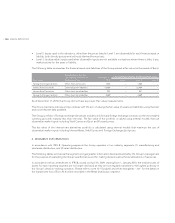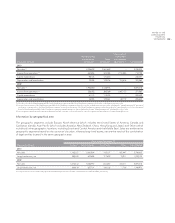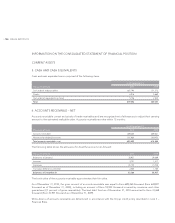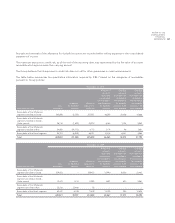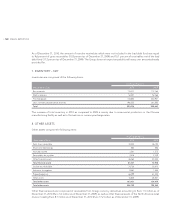LensCrafters 2010 Annual Report Download - page 140
Download and view the complete annual report
Please find page 140 of the 2010 LensCrafters annual report below. You can navigate through the pages in the report by either clicking on the pages listed below, or by using the keyword search tool below to find specific information within the annual report.ANNUAL REPORT 2010> 138 |
This exchange rate risk management policy is applied to all subsidiaries, including companies which have been recently
acquired.
If the Euro/US$ exchange rate had changed by +/– 10 percent with all other variables constant the decrease/increase in
net income and equity would be equal to, net of tax effect, Euro 6.7 million as of December 31, 2010 (Euro 2.1 million
as of December 31, 2009) and Euro 8.3 million as of December 31, 2010 (Euro 1.8 million as of December 31, 2009),
respectively.
Even if exchange rate derivative contracts are stipulated to hedge future commercial transactions as well as assets and
liabilities previously recorded in the financial statements in foreign currency, these contracts, for accounting purposes, are
not accounted for as hedging instruments.
b) Price risk
The Group is generally exposed to price risk associated with investments in bond securities which are classified as assets
at fair value through profit and loss. As of December 31, 2010 and 2009, the Group investment portfolio was fully divested.
As a result, there was no exposure to price risk on such dates. As of December 31, 2009, the investment portfolio was fully
divested. The investment portfolio, in accordance with contractual obligations, must not exceed a value at risk (VAR) of 2
percent with a confidence level of 99 percent. The Group will periodically monitor the VAR level.
c) Credit risk
Credit risk exists related to accounts receivable, cash, financial instruments and deposits in banks and other financial
institutions.
C1) The credit risk related to commercial counterparties is locally managed and monitored by a centralized credit group
for all the entities included in the wholesale distribution segment. Credit risk which originates within the Retail Segment
(including franchise and managed vision care) is locally managed by the companies included in the Retail segment.
Losses on receivables are recorded in the financial statements if there are indicators that a specific risk exists or as
soon as risks of potential insolvency arise, by determining an adequate accrual for doubtful accounts.
The allowance for doubtful accounts utilized for the Wholesale segment and in accordance with the credit policy of
the Group is determined by rating customers according to the following categories:
• “Good” (or active customers), for which no accrual for doubtful accounts is recorded for accounts receivable
overdue for less than 90 days;
• “Good under control”, for which the accounts receivable are overdue for more than 90 days for which an accrual
is determined based on the risk associated to the customer;
• “Risk” (no longer active customers), for which the outstanding accounts receivable are fully provided. The
following are examples of events that may fall into the definition of Risk:
a. significant financial difficulties of the customers;
b. a material contract violation, such as a general breach or default in paying interest or principal;
c. the customer declares bankruptcy or is subject to other insolvency proceedings;
d. all cases in which there is documented proof certifying the non–recoverability of the receivables (i.e. the
inability to trace the debtor, seizures).
The Group does not have significant concentrations of credit risk. In any case, there are proper procedures in place to
ensure that the sales of products and services are made to reliable customers on the basis of their financial position as
well as past experience and other factors. Credit limits are defined according to internal and external evaluations that
are based on thresholds approved by the Board of Directors.


